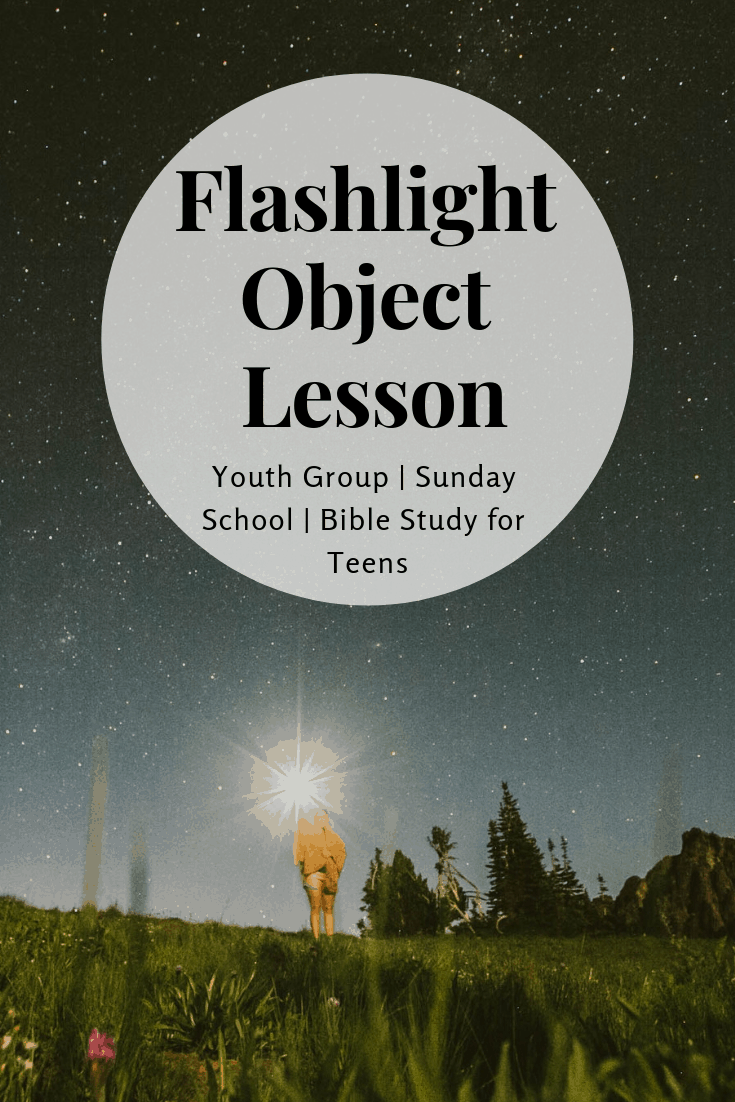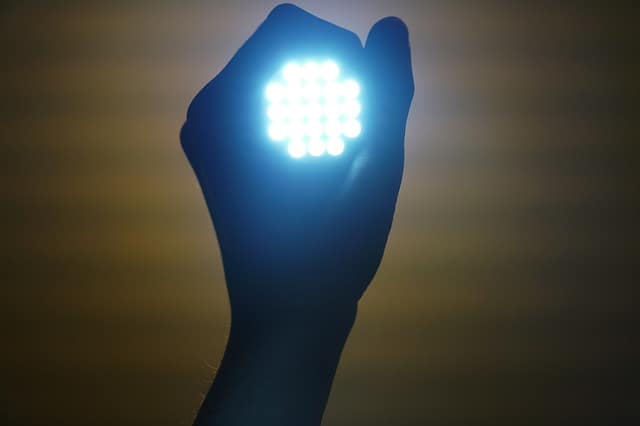This is a great youth group game + object lesson and Bible study all rolled into one. Get your kids talking about how to interpret the Bible, how to put passages in context, and how to apply the Bible to their personal lives. Plus, you get to run around in the dark and rebuild a flashlight.
This object lesson is an adaptation from the Fathom Bible Series, book one of which takes you as the leader and a group of students through the concepts of inspiration, genre, and storylines in the Bible, and how to interpret the Bible and apply it to our daily lives.

Materials Needed
- a flashlight or two
- space to run around in the dark
- Optional (if you have them): a floodlight, a headlight, a laser
Game: Flashlight Freeze
This is a variation of freeze tag that is played in the dark (or in a dimly lit area at minimum).
- Pick one person to be "it".
- The facilitator takes apart the flashlight and hides all the pieces together. (If you have a really large group - or a really small group...see below for small-group variation - use more than one flashlight.)
- Turn off the lights (at least most of them).
- One the flashlight is hidden, everyone except the person who is "it" runs and hides and/or looks for a flashlight. (This is sort of a combination of tag and hide and seek.)
- The goal of the person who is "it" is to tag as many other players as they can. Once someone has been tagged, they are frozen (just like freeze tag). Another player can tag a frozen player to unfreeze them.
- The other players' objective is to find the flashlight and assemble it. Once you put the flashlight together, find the person who is "it" and shine the light on them.
The game ends either when the person who is "it" has tagged and frozen everyone else, or when someone finds the flashlight and shines it on the person who is "it".
Variation for Small Groups
I work at a small-ish church with very few young families. So sometimes our youth group is 3 people, including myself.
We ran this game on a youth group night with 2 youth + me.
Here's how we did it:
- We used 1 flashlight per person (minus the person who's "it") to make it easier to find one.
- The person who is "it" take the batteries out of the flashlight and hides all the pieces together, but not too well (flashlights need to be hidden out in the open for this to work well - though we did do one round allowing hiding in cabinets).
- The others wait outside until the flashlights are hidden.
- Turn the lights off, invite everyone back in, and count to 5 while they get a head start.
- The person who is "it" starts chasing after counting to 5.
While our group was small, we had a LOT of fun with this game. We played 4 rounds in about 15 minutes.
When I was "it", as the youth leader, I gave them some hints (where the flashlights were) and would sometimes walk while they ran, to give them more of a chance to find the flashlight and assemble it.
Overall, this game worked really well even with just 3 of us.
Object Lesson: How is the Bible like a Flashlight?
Bible verse: Psalm 119:105 - "Your word is a lamp for my feet, a light on my path."
Ask your youth what they think this passage is saying. (Affirm all answers.)
To tie this lesson into the flashlight freeze game, also ask them what the hardest part of the game was, and how they felt when they found the flashlight and assembled it.
(My youth got the connection right away: Once you found the flashlight, you felt "safe" and "powerful", i.e. the light gives you power over the darkness, just like Scripture does.)

How the Bible is Like a Flashlight (and a Floodlight, a Headlight, a Laser)
A flashlight illuminates a relatively small area with direct, focused lighting. A flashlight can help us to see our immediate surroundings (i.e. our immediate context).
Compare the flashlight with
- a flood light: illuminates a large area and helps us to see the bigger picture
- a headlight: illuminates the area right in front of us and helps us to better see where we are going
- a shadow: a shadow is produced when an object comes between a surface and a source of light - we can see Jesus as the "shadow" even in passages that are not directly about him, because the whole Bible points towards his ministry and our salvation
- a laser: illuminates a tiny area with powerful, focused light
You can use this object lesson to discuss any Bible passage. This process can help to put favourite passages into a new light, and it can help illuminate some of the more obscure and difficult stories.
Flood light: the big picture
Where does this story fall in the big picture of the entire Bible? (Think about the themes of creation, fall, invitation, redemption, and hope.)
[If you have the Fathom Bible series, and you've done the first 3 lessons, you can also talk about which genre and story line the passage falls into.]
Flashlight: the immediate context
Who was the original intended audience? What was the original purpose of the passage?
You can use study Bibles, commentaries, and other resources to help you with this step. (I really like the Apologetics Study Bible and the Cultural Backgrounds Study Bible for this step.)
Headlight: where we are going
What are the differences and the similarities between the original context and today's context? What does this passage mean today?
Shadow: Jesus
What does this passage say about Jesus? It might be directly about Jesus, or it might point towards him. (In the Old Testament, for example, you can talk about how David's reign as king points towards Jesus' reign. I love Ecclesiastes for this exercise, as it paints a picture of life without Jesus - a very bleak one!)
Laser: personal application
How can I apply this passage to my life today?
